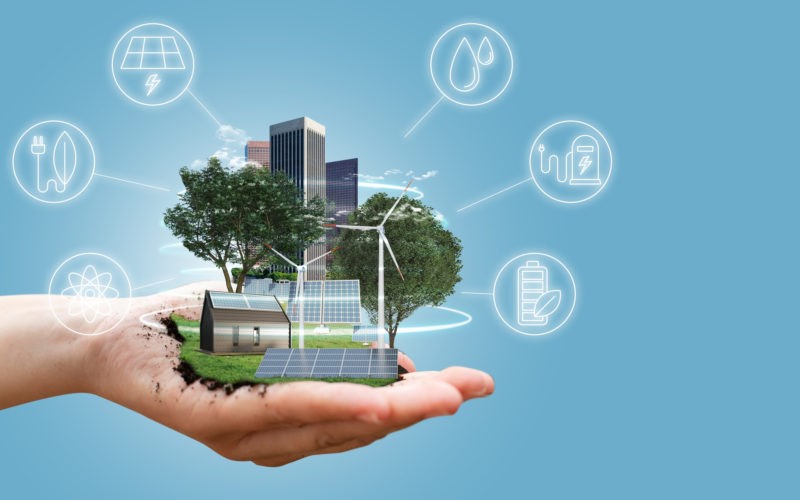In the wake of the Green Revolution, a global movement emerged, steering cities toward sustainability. The quest for greener and more sustainable urban environments is not merely a trend but a crucial endeavor for our planet’s future. As populations burgeon and urbanization accelerates, the significance of fostering sustainable cities becomes increasingly evident. Let’s explore some of the aspects of creating and nurturing sustainable urban environments that prioritize environmental stewardship, economic viability, and social well-being.
Urban Planning for Sustainability
At the heart of every sustainable city lies meticulous urban planning. The integration of mixed land use, expansive green spaces, and efficient transportation systems forms the cornerstone of sustainable urban development. By fostering a harmonious blend of residential, commercial, and recreational zones, cities can reduce commuting distances, mitigate traffic congestion, and promote a more sustainable lifestyle.
Renewable Energy Integration
Sustainable cities are harnessing the power of renewable energy to meet their growing energy demands. Solar, wind, and geothermal energy sources are being seamlessly integrated into urban landscapes, reducing reliance on traditional fossil fuels. This not only mitigates environmental impact but also establishes cities as pioneers in the global transition toward renewable energy.
Green Infrastructure
Green infrastructure solutions, such as green roofs and permeable pavements, are becoming integral components of urban landscapes. These innovations not only enhance the aesthetic appeal of cities but also play a pivotal role in stormwater management. By absorbing rainwater and reducing runoff, green infrastructure mitigates the risk of flooding and helps replenish groundwater tables.
Smart Cities and Technology
The advent of the Internet of Things (IoT) has catalyzed the development of smart cities. IoT technology enables cities to optimize resource use, enhance efficiency, and improve overall quality of life for their residents. From intelligent traffic management to waste reduction through smart bins, technology is proving to be a powerful ally in the journey toward sustainable urban living.
Transportation and Connectivity
Sustainable transportation options are crucial for reducing carbon emissions and alleviating congestion. Robust public transit systems, well-designed cycling infrastructure, and the increasing adoption of electric vehicles collectively contribute to creating eco-friendly urban environments.
Waste Management and Recycling
In the pursuit of sustainability, cities are redefining waste management practices. Innovative solutions such as waste-to-energy facilities, comprehensive recycling programs, and encouraging a circular economy within city limits are gradually reshaping urban waste management.
Community Engagement and Social Sustainability
A sustainable city is one that actively involves its residents in the pursuit of environmental harmony. Engaging communities in sustainable initiatives not only promotes a sense of ownership but also strengthens the city’s resilience in the face of challenges. Social sustainability initiatives foster a sense of community and shared responsibility among residents.
Green Building Practices
Green building practices are transforming urban skylines. Energy-efficient architecture, the use of sustainable materials, and the integration of green spaces within buildings are setting new benchmarks for environmentally conscious construction. These practices not only reduce energy consumption but also contribute to a healthier and more sustainable urban habitat.
Efficient Water Management
Water, a precious resource, demands careful management in sustainable cities. Strategies such as water conservation, rainwater harvesting, and the utilization of recycled water play a pivotal role in ensuring the availability of this vital resource for future generations. Orbit rising stem ball valves, for instance, are emerging as essential components in water management systems, offering efficiency and reliability.
Challenges and Solutions
While the journey toward sustainable cities is promising, it is not without challenges. Acknowledging issues like infrastructure retrofitting, economic constraints, and public resistance is crucial. However, with innovative solutions and strategic planning, these challenges can be overcome. Collaborative efforts between governments, businesses, and communities are imperative to surmount obstacles and pave the way for a sustainable urban future.
Government Policies and Initiatives
Government policies play a pivotal role in steering urban development toward sustainability. Incentives for sustainable architecture, renewable energy adoption, and green infrastructure development are essential tools in promoting eco-friendly urban planning. Governments worldwide are recognizing the need for proactive policies to create a conducive environment for sustainable city initiatives.
Educational Programs and Awareness
Educating citizens about sustainability is paramount to fostering a culture of environmental responsibility. Educational programs and awareness campaigns can empower individuals to make informed choices, reducing their ecological footprint and contributing to the collective effort toward sustainable urban living.
Measuring Success
Success in sustainable city initiatives is measurable through various metrics. Reduced carbon footprint, improved air quality, increased green spaces, and enhanced quality of life are key indicators of a city’s progress toward sustainability. Establishing clear benchmarks allows cities to track their achievements and continually strive for improvement.
Final Words
In the pursuit of sustainable urban living, our cities stand at the threshold of a transformative journey. The commitment to sustainability is not just an environmental endeavor, it is a promise to future generations, a commitment to resilience in the face of global challenges, and a recognition that the choices we make today echo through the corridors of time.
In the realm of urban development, the amalgamation of innovative technologies, forward-thinking policies, and the active involvement of communities forms the crucible where sustainable cities are forged. The incorporation of green infrastructure, the harnessing of renewable energy, and the conscientious management of water resources, are pivotal components in this paradigm shift. It is a shift that not only mitigates the impact of urbanization on the environment but also fosters social cohesion and economic vitality.
The success of sustainable city initiatives lies not merely in individual achievements, but in the interconnectedness of these efforts. Cities, like living organisms, thrive when their various components work in harmony. The measured success of reduced carbon footprints, increased green spaces, and improved air quality are not just metrics, they are testaments to the resilience of cities that embrace sustainability. In this collective endeavor, each decision, each policy, and each innovation contributes to the creation of cities that are not only sustainable but also thriving hubs of human ingenuity and resilience. The blueprint is drawn, and it is now our shared responsibility to build, nurture, and pass on cities that stand as beacons of sustainable living for generations yet to come!











